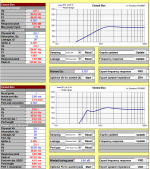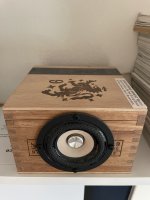I’m currently in the process of brainstorming ideas to mod one of these:
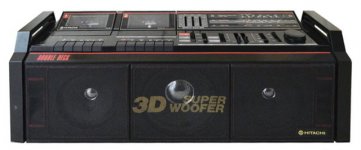
Into one of these:
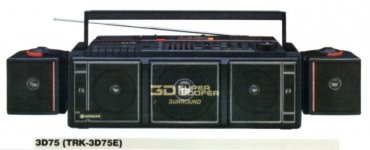
Using 2 of these (one at each end):
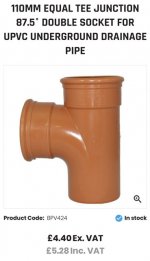
I haven’t got the pipes yet, so can’t calculate the space it would give, but a very rough estimate is about 5L with an internal diameter of about 100mm.
I was wondering if someone here would be able to calculate the required space for the following drivers:
1. £24.25 20% Off | AIYIMA 2Pcs 3 Inch Audio Speaker 4Ohm 8Ohm 15W Full Range Speaker HIFI Treble Mediant Bass Loudspeaker DIY
AIYIMA 2Pcs 3 Inch Audio Speaker 4Ohm 8Ohm 15W Full Range Speaker HIFI Treble Mediant Bass Loudspeaker DIY| | - AliExpress
2. £25.83 25% Off | AIYIMA 2Pcs 3Inch Audio Portable Speakers 4 Ohm 8 Ohm 15W Full Range Hifi Bass Speaker Altavoz Portatil Speaker DIY Home Theater
AIYIMA 2Pcs 3Inch Audio Portable Speakers 4 Ohm 8 Ohm 15W Full Range Hifi Bass Speaker Altavoz Portatil Speaker DIY Home Theater|portable speaker|bass speakerspeaker 4ohm - AliExpress
3. £13.81 30% Off | 20W 3 Inch Speaker 4~8 Ohm Full Frequency Speaker 1 Pcs Fever HIFI Metal Ceramic Aluminum Basin Home Audio Amplifier Speaker
20W 3 Inch Speaker 4~8 Ohm Full Frequency Speaker 1 Pcs Fever HIFI Metal Ceramic Aluminum Basin Home Audio Amplifier Speaker|Bookshelf Speakers| - AliExpress
I’m also open to any suggestions for drivers.

Into one of these:

Using 2 of these (one at each end):

I haven’t got the pipes yet, so can’t calculate the space it would give, but a very rough estimate is about 5L with an internal diameter of about 100mm.
I was wondering if someone here would be able to calculate the required space for the following drivers:
1. £24.25 20% Off | AIYIMA 2Pcs 3 Inch Audio Speaker 4Ohm 8Ohm 15W Full Range Speaker HIFI Treble Mediant Bass Loudspeaker DIY
AIYIMA 2Pcs 3 Inch Audio Speaker 4Ohm 8Ohm 15W Full Range Speaker HIFI Treble Mediant Bass Loudspeaker DIY| | - AliExpress
2. £25.83 25% Off | AIYIMA 2Pcs 3Inch Audio Portable Speakers 4 Ohm 8 Ohm 15W Full Range Hifi Bass Speaker Altavoz Portatil Speaker DIY Home Theater
AIYIMA 2Pcs 3Inch Audio Portable Speakers 4 Ohm 8 Ohm 15W Full Range Hifi Bass Speaker Altavoz Portatil Speaker DIY Home Theater|portable speaker|bass speakerspeaker 4ohm - AliExpress
3. £13.81 30% Off | 20W 3 Inch Speaker 4~8 Ohm Full Frequency Speaker 1 Pcs Fever HIFI Metal Ceramic Aluminum Basin Home Audio Amplifier Speaker
20W 3 Inch Speaker 4~8 Ohm Full Frequency Speaker 1 Pcs Fever HIFI Metal Ceramic Aluminum Basin Home Audio Amplifier Speaker|Bookshelf Speakers| - AliExpress
I’m also open to any suggestions for drivers.
Last edited:
No takers? I wouldn't expect anyone to model three different drivers for you 😉
I suggest the Peerless 830987 3" full range.
Peerless 830987 Size 76x76mm
It has been modelled using Bass Box Pro software which says it will operate well into a sealed enclosure of volume 0.1 cu ft (2.83 litre). This gives a sealed f3 of 98 Hz.
Call that at least 3 litre by the time you allow for the space the necessary end caps and the driver itself takes up.
You can try employing the full volume of your drainage pipe first of all, you can reduce it with infill if necessary.
I suggest the Peerless 830987 3" full range.
Peerless 830987 Size 76x76mm
It has been modelled using Bass Box Pro software which says it will operate well into a sealed enclosure of volume 0.1 cu ft (2.83 litre). This gives a sealed f3 of 98 Hz.
Call that at least 3 litre by the time you allow for the space the necessary end caps and the driver itself takes up.
You can try employing the full volume of your drainage pipe first of all, you can reduce it with infill if necessary.
I wasn’t sure what to request. Didn’t know if calculating required volume was a simpler calc than simming the whole lot.
Thanks for the suggestion.
If someone would like to model just one from the above that I listed to go up against the Peerless, number 1 would be good. 🙂
Thanks for the suggestion.

If someone would like to model just one from the above that I listed to go up against the Peerless, number 1 would be good. 🙂
Call that at least 3 litre by the time you allow for the space the necessary end caps and the driver itself.
This could be a problem. I now have the pipes (see other thread).
They’re 3L total.
I think we’re looking at 2.6L usable space after some cosmetic adjustments and gluing a suitable disc in there to seat the driver.
The difference between 2.6 L and 2.8 L is not significant in this application.
Adding internal absorbent makes the volume look a little bigger to the driver anyway.
Adding internal absorbent makes the volume look a little bigger to the driver anyway.
Attached is the Unibox simulation for the Peeerless 830987 in a 2.5 L sealed enclosure and in a 2.5 L vented enclosure - courtesy of member champ222.
The sealed box is the easier to deal with and is forgiving of small changes in enclosure volume.
The sealed box is the easier to deal with and is forgiving of small changes in enclosure volume.
Attachments
Last edited:
Note the compact and powerful neodymium magnet system - takes up less volume than a ceramic magnet!
The sensitivity is around 83dB, nominal impedance 8 ohm and RMS power handling 25 W. Choose your add-on amplifier accordingly.
Don't expect deep bass, but note that the current "superwoofer" doesn't go way down there either!
The sensitivity is around 83dB, nominal impedance 8 ohm and RMS power handling 25 W. Choose your add-on amplifier accordingly.
Don't expect deep bass, but note that the current "superwoofer" doesn't go way down there either!
I’ve had another look at small amp boards. Something like this: TPA3116D2 Digital Power Amplifier Board Dual channel DC12 26V Audio Amplification TPA3116 D2 2*120W Amplifiers Plate C3 002|Amplifier| - AliExpress looks like a good choice.
Not possible to port/vent the tube on the away facing side to improve the bass?
Not possible to port/vent the tube on the away facing side to improve the bass?
The enclosure volume is too small for ported use.
The sealed 2.5 L volume gives the smoothest response.
The sealed 2.5 L volume gives the smoothest response.
However, you can try it if you want - you can always block up the port if the bass response is unsatisfactory.
Bumping/hijaking this existing thread because it looks like it has similar constraints to my project.
I've built full range cigar box speakers using Tang W3-2141 full range drivers (spec sheet) that I'm using as LCR for a stealth home theater setup. Boxes are 4 x 6 x 6in (about 140cu in, .08 cu ft, or 2.3L internally) and curently sealed. I had no idea what I was doing when I bought the parts, so no calcs went into them except what would fit and look nice enough to pass the girlfriend test. According to online calcs, these drivers want 3x (sealed) to 6x (ported) more volume at a Qtc of 0.7. At the current box volume, Qtc is about 2.5 (!!!).
The result is a really muddy midrange/dialogue, from drivers that should excel there, even crossed over with an SVS 8" 3000 sub (I've tried both 120Hz and 150Hz).
What I'm wondering is if porting or stuffing the boxes will make any appreciable difference or if I'm wasting my time trying to make this combo work.My challenge is these speakers really need to disappear into an actual bookshelf with books, so my alternatives are limited to something like the monitor radius 90 in white or even smaller and more discreet. I could probably fit new boxes with maybe 2X the volume, but my woodshop is really limited (hand tools, no table saw or drill press), so don't want to take that on unless I know it will make a major difference.
Any advice or possibilities?
I've built full range cigar box speakers using Tang W3-2141 full range drivers (spec sheet) that I'm using as LCR for a stealth home theater setup. Boxes are 4 x 6 x 6in (about 140cu in, .08 cu ft, or 2.3L internally) and curently sealed. I had no idea what I was doing when I bought the parts, so no calcs went into them except what would fit and look nice enough to pass the girlfriend test. According to online calcs, these drivers want 3x (sealed) to 6x (ported) more volume at a Qtc of 0.7. At the current box volume, Qtc is about 2.5 (!!!).
The result is a really muddy midrange/dialogue, from drivers that should excel there, even crossed over with an SVS 8" 3000 sub (I've tried both 120Hz and 150Hz).
What I'm wondering is if porting or stuffing the boxes will make any appreciable difference or if I'm wasting my time trying to make this combo work.My challenge is these speakers really need to disappear into an actual bookshelf with books, so my alternatives are limited to something like the monitor radius 90 in white or even smaller and more discreet. I could probably fit new boxes with maybe 2X the volume, but my woodshop is really limited (hand tools, no table saw or drill press), so don't want to take that on unless I know it will make a major difference.
Any advice or possibilities?
Here’s a quick pic. Pls excuse the dust.
I could also add a large-ish (5") passive radiator to the top, or smaller (3") ones to the sides if that would make any difference.
if I did add a vent, it would most likely be the side given an 8” shelf and proximity to the wall.
I could also add a large-ish (5") passive radiator to the top, or smaller (3") ones to the sides if that would make any difference.
if I did add a vent, it would most likely be the side given an 8” shelf and proximity to the wall.
Attachments
Last edited:
The parameters of the driver should be used to produce a ported alignment that provides the desired frequency response and enclosure volume.
Since you've put the enclosure size first, and since it's so small, a successful ported alignment looks impossible. I think the same will be true of a passive radiator alignment - unless the expert speaker designers tell us different!
There's one other possibility. It's a long shot, but you could try going aperiodic with your satellite enclosures in an attempt to reduce the system Q and hopefully reduce the "muddyness".
https://diyaudioprojects.com/Technical/Aperiodic/
https://diyaudioprojects.com/Technical/Aperiodic/Aperiodic-Enclosures.htm
If my calculations are correct, the "10 square inches per cubic foot of enclosure volume" rule given in the second link would translate to a 1" diameter resistive vent. At least drilling such a small hole in the rear of your cigar box will not be too intrusive, and will not prevent further experimentation if it doesn't bring about an improvement!
Since you've put the enclosure size first, and since it's so small, a successful ported alignment looks impossible. I think the same will be true of a passive radiator alignment - unless the expert speaker designers tell us different!
There's one other possibility. It's a long shot, but you could try going aperiodic with your satellite enclosures in an attempt to reduce the system Q and hopefully reduce the "muddyness".
https://diyaudioprojects.com/Technical/Aperiodic/
https://diyaudioprojects.com/Technical/Aperiodic/Aperiodic-Enclosures.htm
If my calculations are correct, the "10 square inches per cubic foot of enclosure volume" rule given in the second link would translate to a 1" diameter resistive vent. At least drilling such a small hole in the rear of your cigar box will not be too intrusive, and will not prevent further experimentation if it doesn't bring about an improvement!
Interesting. I was not familiar with aperiodic vents. Doesn't look like anyone makes them in the 1" sizes for my little full ranges but seems like they could be made from a sandwich of fiberglass and plastic craft parts.
I have two extra boxes, so I'm tempted to just start experimenting. Easy enough to cut into one of them and A/B the setup. Will order up a pair of small radiators and see if I can piece together parts to make an aperiodic vent.
Thanks for the suggestions.
I have two extra boxes, so I'm tempted to just start experimenting. Easy enough to cut into one of them and A/B the setup. Will order up a pair of small radiators and see if I can piece together parts to make an aperiodic vent.
Thanks for the suggestions.
That is almost exactly what the commercially sold aperiodic vents. You are better to tune your own.
Fibergalss and some sort of mesh (i have rolls of a nice plastic gutter mesh) works well. It is not he only way.
dave
Fibergalss and some sort of mesh (i have rolls of a nice plastic gutter mesh) works well. It is not he only way.
dave
I have two extra boxes, so I'm tempted to just start experimenting.
Experimentation is the order of the day! 😎
The resistive vent diameter is not set in stone so you could also try a 1.5" diameter vent, which is just over twice the area of a 1.0" diameter one.
I have found that unless the holes re small, as exemplified by those in the Perkins PR2, a rectangle is easier to get the fiberglass to squish down. I prefwer other methods but the A25 stle vent works and is simple but hrder to adjust.
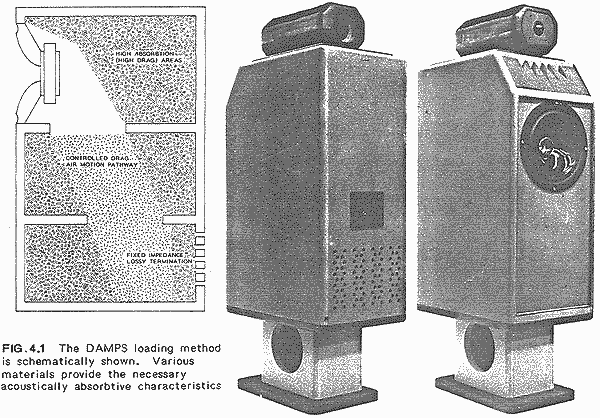
dave
dave
- Home
- Loudspeakers
- Full Range
- Calculating required enclosure size
